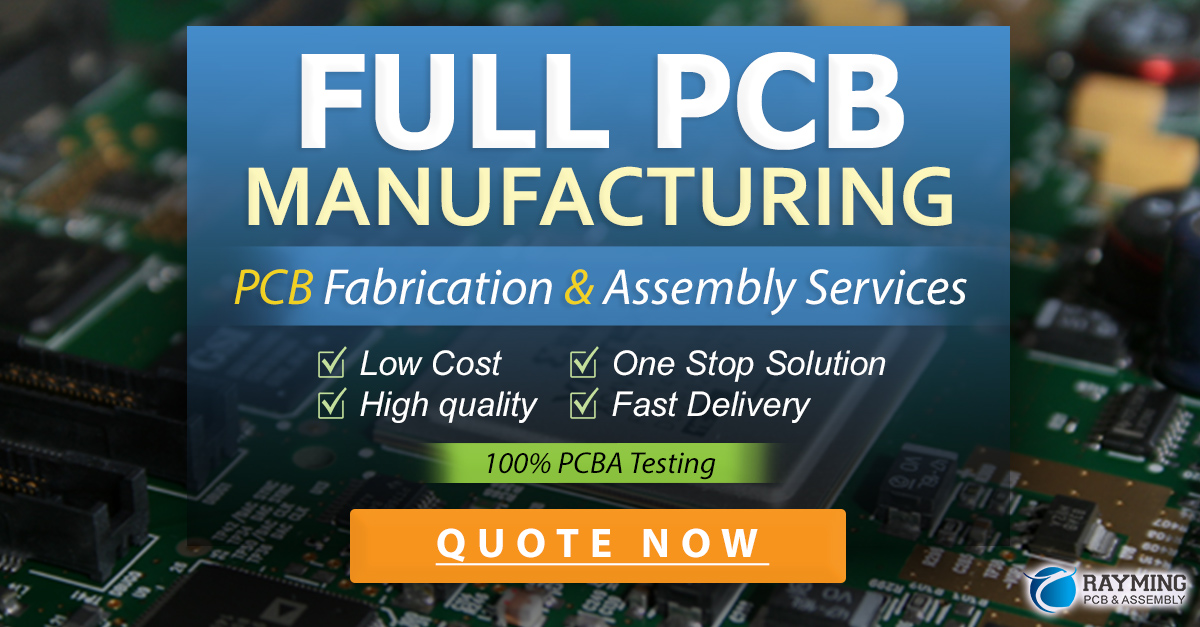1. Design and Planning
Importance of Design and Planning
The foundation of a successful box build assembly process lies in thorough design and planning. Before any physical assembly takes place, it is essential to invest time and resources into creating a comprehensive design that takes into account all the necessary components, their interactions, and the desired functionality of the final product.
Key Aspects of Design and Planning
-
Component Selection: Choose components that are compatible, reliable, and meet the required specifications. Consider factors such as power requirements, form factor, and environmental conditions.
-
Schematic Design: Create a detailed schematic that outlines the electrical connections and interactions between components. This schematic will serve as a roadmap for the assembly process.
-
Mechanical Design: Develop a 3D model or detailed drawings of the enclosure, including the placement of components, mounting points, and any necessary cutouts or openings.
-
Bill of Materials (BOM): Generate a comprehensive list of all the components, fasteners, and materials required for the assembly process. This helps ensure that all necessary parts are available when needed.
Benefits of Proper Design and Planning
- Reduces the likelihood of assembly errors and delays
- Minimizes the need for rework and modifications
- Enhances the overall quality and reliability of the final product
- Facilitates efficient resource allocation and inventory management
2. Component Procurement and Quality Control
Importance of Component Procurement and Quality Control
Procuring high-quality components is essential for the success of the box build assembly process. Poor-quality components can lead to performance issues, reduced reliability, and increased costs associated with rework and repairs. Implementing a robust quality control system ensures that only components meeting the required specifications are used in the assembly process.
Key Aspects of Component Procurement and Quality Control
-
Supplier Selection: Choose reputable suppliers who have a proven track record of providing high-quality components consistently. Consider factors such as lead times, pricing, and technical support.
-
Incoming Inspection: Establish a process for inspecting incoming components to verify their quality and conformance to specifications. This may include visual inspections, functional testing, and sample testing.
-
Traceability: Implement a system for tracking components from the point of receipt to the final assembly. This helps identify the source of any quality issues and facilitates corrective actions.
-
Inventory Management: Maintain an organized inventory system that ensures the availability of components when needed while minimizing excess inventory and obsolescence.
Benefits of Proper Component Procurement and Quality Control
- Reduces the risk of assembly delays due to component shortages or quality issues
- Enhances the overall quality and reliability of the final product
- Minimizes the costs associated with rework, repairs, and warranty claims
- Improves customer satisfaction and brand reputation
3. Assembly Process Optimization
Importance of Assembly Process Optimization
Optimizing the assembly process is crucial for achieving efficiency, consistency, and quality in box build assembly. By streamlining the assembly steps, minimizing bottlenecks, and implementing best practices, manufacturers can reduce cycle times, improve productivity, and enhance the overall quality of the final product.
Key Aspects of Assembly Process Optimization
-
Process Mapping: Create a detailed process map that outlines each step of the assembly process, including component placement, soldering, testing, and packaging. This helps identify potential bottlenecks and areas for improvement.
-
Workstation Design: Design ergonomic workstations that facilitate efficient assembly and minimize operator fatigue. Consider factors such as lighting, tool placement, and material flow.
-
Automation and Tooling: Implement automation and specialized tooling where appropriate to improve consistency, accuracy, and speed. This may include the use of pick-and-place machines, automatic soldering equipment, and custom jigs and fixtures.
-
Lean Manufacturing Principles: Apply lean manufacturing principles, such as 5S, Kaizen, and just-in-time (JIT) production, to eliminate waste, reduce inventory, and improve overall efficiency.
Benefits of Assembly Process Optimization
- Reduces cycle times and improves throughput
- Enhances consistency and quality of the final product
- Minimizes the risk of human error and assembly mistakes
- Improves operator safety and ergonomics
- Reduces costs associated with waste, rework, and inventory

4. Testing and Quality Assurance
Importance of Testing and Quality Assurance
Thorough testing and quality assurance are essential for ensuring that the box build assembly meets the desired specifications and performs reliably in the field. Implementing a comprehensive testing strategy helps identify and address any issues before the product reaches the customer, reducing the risk of costly recalls and warranty claims.
Key Aspects of Testing and Quality Assurance
-
Functional Testing: Conduct functional tests to verify that the assembled product performs as intended. This may include testing of electrical connections, user interface functionality, and overall system performance.
-
Environmental Testing: Perform environmental tests to ensure that the product can withstand the intended operating conditions. This may include temperature cycling, vibration testing, and humidity exposure.
-
In-Circuit Testing (ICT): Utilize ICT to verify the integrity of individual components and the correctness of the assembled circuit. This helps identify any manufacturing defects or component failures.
-
Burn-In Testing: Conduct burn-in tests to identify any early-life failures and ensure the long-term reliability of the product. This involves operating the product under controlled conditions for an extended period.
Benefits of Testing and Quality Assurance
- Identifies and addresses issues before the product reaches the customer
- Reduces the risk of costly recalls and warranty claims
- Enhances customer satisfaction and brand reputation
- Provides valuable feedback for continuous improvement of the assembly process
5. Documentation and Traceability
Importance of Documentation and Traceability
Maintaining accurate and comprehensive documentation throughout the box build assembly process is crucial for ensuring consistency, facilitating troubleshooting, and enabling traceability. Proper documentation helps streamline the assembly process, reduces the risk of errors, and provides a valuable resource for future reference and continuous improvement.
Key Aspects of Documentation and Traceability
-
Work Instructions: Create clear and detailed work instructions that guide operators through each step of the assembly process. Include visual aids, such as pictures and diagrams, to enhance clarity and minimize the risk of errors.
-
Revision Control: Implement a system for managing revisions to design documents, BOMs, and work instructions. This ensures that the most up-to-date information is always available and prevents the use of outdated materials.
-
Serial Number Tracking: Assign unique serial numbers to each assembled product and maintain records of the components used, assembly dates, and test results. This enables traceability and facilitates root cause analysis in case of any issues.
-
Quality Records: Maintain accurate quality records, including inspection reports, test results, and any corrective actions taken. These records provide evidence of compliance with quality standards and can be valuable in case of audits or customer inquiries.
Benefits of Documentation and Traceability
- Ensures consistency and accuracy in the assembly process
- Facilitates troubleshooting and root cause analysis
- Enables compliance with quality standards and regulatory requirements
- Provides a valuable resource for training new operators and continuous improvement initiatives
Frequently Asked Questions (FAQ)
1. How can I ensure the compatibility of components in my box build assembly?
To ensure component compatibility, consider the following:
– Review the technical specifications of each component, including power requirements, communication protocols, and form factors.
– Consult with component manufacturers or suppliers for guidance on compatibility and recommended usage.
– Conduct thorough testing and validation of the assembled product to verify proper functionality and identify any compatibility issues.
2. What are some best practices for managing inventory in box build assembly?
Some best practices for inventory management in box build assembly include:
– Implement a robust inventory tracking system, such as barcoding or RFID, to accurately monitor stock levels and locations.
– Establish minimum and maximum stock levels for each component based on lead times, usage rates, and production schedules.
– Regularly review and adjust inventory levels to minimize excess stock and prevent shortages.
– Implement just-in-time (JIT) principles to reduce inventory holding costs and improve cash flow.
3. How can I optimize my assembly workstations for maximum efficiency?
To optimize assembly workstations for maximum efficiency, consider the following:
– Conduct a thorough analysis of the assembly process to identify bottlenecks and areas for improvement.
– Design workstations with ergonomics in mind, providing adequate lighting, comfortable seating, and easy access to tools and materials.
– Implement 5S principles (Sort, Set in Order, Shine, Standardize, Sustain) to create a clean, organized, and efficient work environment.
– Utilize visual aids, such as color-coding and labeling, to facilitate quick identification of components and tools.
4. What are some common challenges in box build assembly, and how can I overcome them?
Some common challenges in box build assembly include:
– Component shortages or delays: Establish strong relationships with suppliers, maintain adequate safety stock, and continuously monitor lead times and market conditions.
– Quality issues: Implement robust quality control processes, including incoming inspection, in-process checks, and final testing. Provide regular training to operators and foster a quality-focused culture.
– Design changes: Establish clear communication channels with the design team, implement a robust change management process, and maintain accurate documentation to ensure smooth transitions.
5. How can I ensure compliance with industry standards and regulations in my box build assembly process?
To ensure compliance with industry standards and regulations, consider the following:
– Familiarize yourself with the relevant standards and regulations applicable to your industry and target markets.
– Incorporate compliance requirements into your design and assembly processes, including component selection, testing, and documentation.
– Conduct regular audits and assessments to verify compliance and identify areas for improvement.
– Provide training to employees on compliance requirements and best practices.
– Maintain accurate records and documentation to demonstrate compliance during audits or customer inquiries.
Conclusion
The box build assembly process is a critical aspect of manufacturing that requires careful consideration of various factors to ensure success. By focusing on the top 5 considerations outlined in this article – design and planning, component procurement and quality control, assembly process optimization, testing and quality assurance, and documentation and traceability – manufacturers can streamline their assembly processes, improve quality, and enhance customer satisfaction.
By investing in thorough design and planning, procuring high-quality components, optimizing assembly processes, implementing comprehensive testing and quality assurance, and maintaining accurate documentation, manufacturers can build a strong foundation for a successful box build assembly operation. Continuously monitoring and improving these key areas will help manufacturers stay competitive, adapt to changing market demands, and deliver high-quality products to their customers.
| Consideration | Key Aspects | Benefits |
|---|---|---|
| Design and Planning | – Component selection – Schematic design – Mechanical design – Bill of Materials (BOM) |
– Reduces assembly errors and delays – Minimizes rework and modifications – Enhances quality and reliability – Facilitates efficient resource allocation |
| Component Procurement and Quality Control | – Supplier selection – Incoming inspection – Traceability – Inventory management |
– Reduces risk of assembly delays – Enhances quality and reliability – Minimizes costs associated with rework and repairs – Improves customer satisfaction |
| Assembly Process Optimization | – Process mapping – Workstation design – Automation and tooling – Lean manufacturing principles |
– Reduces cycle times and improves throughput – Enhances consistency and quality – Minimizes risk of human error – Improves operator safety and ergonomics – Reduces costs associated with waste and rework |
| Testing and Quality Assurance | – Functional testing – Environmental testing – In-Circuit Testing (ICT) – Burn-in testing |
– Identifies and addresses issues before reaching the customer – Reduces risk of recalls and warranty claims – Enhances customer satisfaction and brand reputation – Provides feedback for continuous improvement |
| Documentation and Traceability | – Work instructions – Revision control – Serial number tracking – Quality records |
– Ensures consistency and accuracy – Facilitates troubleshooting and root cause analysis – Enables compliance with quality standards and regulations – Provides a valuable resource for training and continuous improvement |
By addressing these top 5 considerations and implementing the best practices discussed in this article, manufacturers can optimize their box build assembly processes, improve quality, and achieve long-term success in a competitive market.






Leave a Reply